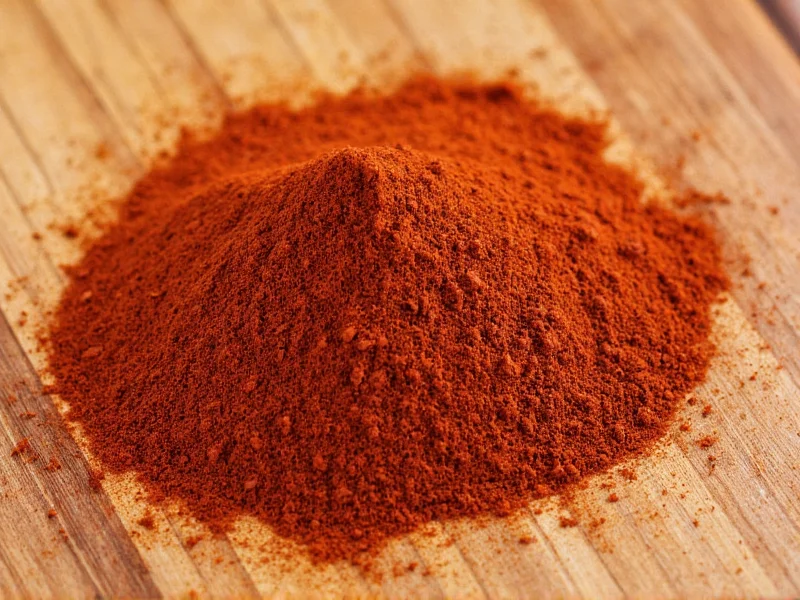The term \"reddish spice\" most commonly refers to paprika, a vibrant red powder made from ground Capsicum annuum peppers. Other prominent reddish spices include Kashmiri red chili powder, annatto (achiote), and sumac, each offering unique flavor profiles and culinary applications across global cuisines. These spices provide both visual appeal and distinctive taste characteristics to dishes ranging from Hungarian goulash to Middle Eastern salads.
When exploring reddish spice options for your cooking, understanding their specific properties is essential for achieving desired results. Paprika stands as the most versatile reddish spice worldwide, with varieties spanning from sweet Hungarian paprika to smoked Spanish piment\u00f3n. The color intensity directly correlates with capsaicin content and carotenoid levels, which determine both heat level and visual impact in dishes.
Primary Reddish Spices and Their Characteristics
Paprika remains the most widely used reddish spice globally, with distinct regional variations:| Spice Type | Origin | Heat Level (Scoville) | Color Profile | Primary Culinary Uses |
|---|---|---|---|---|
| Sweet Hungarian Paprika | Hungary | 0-500 SHU | Bright red | Goulash, chicken paprikash, deviled eggs |
| Smoked Spanish Piment\u00f3n | Spain | 100-1,000 SHU | Deep brick red | Chorizo, paella, roasted vegetables |
| Kashmiri Red Chili Powder | India | 1,500-2,500 SHU | Vibrant crimson | Butter chicken, tandoori dishes, curries |
| Annatto (Achiote) | Latin America | 0 SHU | Orange-red | Recado rojo, rice dishes, cheese coloring |
| Sumac | Middle East | 0 SHU | Deep burgundy | Fattoush salad, grilled meats, rice pilafs |
Culinary Applications and Flavor Profiles
Each reddish spice contributes unique characteristics to dishes beyond mere color. Sweet Hungarian paprika delivers earthy, slightly sweet notes that form the foundation of Central European cuisine without significant heat. When selecting paprika for traditional Hungarian dishes, look for the eight-petal rose symbol indicating authentic Hungarian origin. Smoked Spanish piment\u00f3n introduces a distinctive campfire aroma that transforms simple dishes like patatas bravas into complex flavor experiences. The smoking process over oak fires creates depth that cannot be replicated with regular paprika. For authentic Spanish recipes, always specify whether you need piment\u00f3n dulce (sweet) or piment\u00f3n picante (spicy). Kashmiri red chili powder offers moderate heat with exceptional color properties, making it ideal for Indian dishes where vibrant red appearance matters more than intense spiciness. Many commercial "curry powders" rely on Kashmiri chili for their characteristic hue rather than heat. When substituting for cayenne, use approximately three times the amount of Kashmiri powder to achieve similar color without overwhelming heat. Annatto, derived from the seeds of the achiote tree, provides rich color without heat, making it perfect for dishes requiring visual appeal without spiciness. Traditional Mexican recado rojo paste combines annatto with spices and citrus for cochinita pibil. Unlike paprika, annatto's color compounds are fat-soluble, so recipes often call for toasting the seeds in oil first. Sumac, made from dried and ground berries, offers a tart, lemony flavor with its distinctive burgundy color. Middle Eastern cooks use it as both seasoning and decorative element, sprinkling it over finished dishes for visual contrast. Unlike other reddish spices, sumac's acidity makes it function more like a citrus ingredient in recipes.Substitution Guidelines for Reddish Spices
Understanding appropriate substitutions prevents culinary disasters when your preferred reddish spice isn't available. For paprika substitutions, consider both color and flavor requirements:- When color matters most (like deviled eggs): Use a 1:1 ratio of sweet paprika to Kashmiri chili powder
- When smokiness is essential: Replace 1 tsp smoked paprika with \u00bd tsp regular paprika plus a drop of liquid smoke
- For heat without intense color: Substitute cayenne pepper at \u00bc the amount of paprika called for
- When replacing annatto for color: Use turmeric sparingly (it stains more yellow) or tomato paste diluted with water
- For sumac's tartness: Replace 1 tbsp sumac with 2 tsp lemon zest plus 1 tsp paprika for color
Storage and Quality Assessment
Proper storage significantly extends the shelf life of reddish spices while preserving their vibrant color. Store all ground spices in airtight containers away from light, heat, and moisture. The ideal storage temperature remains below 70\u00b0F (21\u00b0C) with humidity under 60%. Under these conditions, most reddish spices maintain peak quality for 6-12 months. To assess freshness of your paprika or other reddish spices, perform these simple tests:- Color intensity: Fresh spices display vibrant, uniform color; faded or uneven color indicates degradation
- Aroma strength: Rub a small amount between your palms; strong, characteristic fragrance indicates freshness
- Taste test: Fresh spices deliver clean, defined flavor; stale spices taste flat or musty
- Oil separation: For paprika specifically, fresh quality shows slight oil sheen when pressed











 浙公网安备
33010002000092号
浙公网安备
33010002000092号 浙B2-20120091-4
浙B2-20120091-4